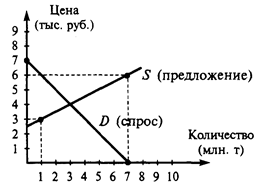THE TRADITIONAL VIEW OF HOW HUMAN BEHAVIOR COMES ABOUT
This traditional view of how advertising works as the dominant brand information source for consumers is based on the explanation developed in the first half of the 20th century by behaviorist psychologists. To the behaviorists, all human (and animal) behavior can be explained in terms of the external stimuli to which individuals are exposed and the responses that these stimuli evoke. To the behaviorists, everything needed to explain behavior occurs outside the individual. Observable stimuli and the responses that follow from them are the whole cause and whole effect of behavior-there is no need to understand or to try to explain internal mental processes and their relation to final behavior since these processes are irrelevant to observable stimuli and observable responses. As Cognitive Scientist and Nobel Laureate Eric R. Kandel observes (Kandel, 2000, p. 382): For behaviorists, unobservable mental processes, especially anything as abstract as conscious awareness, was simply deemed inaccessible to scientific study. Instead, they concentrated on evaluating--objectively and precisely-the relationship between specific physical stimuli and observable responses in intact animals. The behaviorist model of human behavior has been embraced by the advertising industry, at least since the 1950s, for several reasons: • First, because it was a plausible explanation of how humans react to advertisements that had, at least at one time, received authoritative support from theoretical and applied psychologists-that is, the behaviorists. • Second, because it was simple and easy to understand, it made it easy to tell advertisers and potential advertisers why and how their advertising would work. • Third, because it provided a rationale for the measurement of advertising's overall effects (the awareness-interest-desire-action hierarchy-of-effects concept) and a basis for predicting the likelihood that specific individual advertisements would be successful in the marketplace (copy testing). • Fourth, because it reinforced the idea that all brand decisions are conscious and rational, and that advertising could influence such conscious and rational decisions. However, available evidence, particularly the work of Andrew Ehrenberg and his colleagues (Barnard and Ehrenberg, 1997; Ehrenberg, Barnard, Kennedy, and Bloom, 2002), strongly suggests that consumers do not make an overt, conscious decision before they buy a particular brand. Rather, in most product categories, consumer brand choice is made almost exclusively from a "repertoire" of three or four acceptable brands among which the consumer has continuously divided his or her purchases in the past. If the understanding of how advertising works and the psychology upon which it is based are flawed, marketers may have to rethink the role that advertising and other forms of marketing communication play in the consumer choice of brands: • The objective of advertising, specifically, and marketing communications, generally, is not to cause a consumer to buy a particular brand on his next purchase occasion. • Rather, the role of advertising and marketing communications is to make a brand seem at least as acceptable as the brands that the consumer already routinely purchases in the product category.
|




